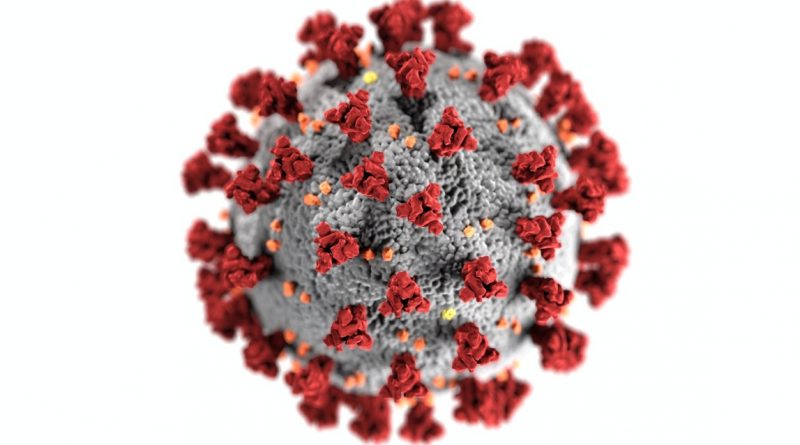For every two COVID-19 deaths, one child loses a caregiver.
Laura Rawlings and Susan Hillis
At current rates, one child is orphaned every 12 seconds due to a COVID-19-associated death, and the toll is growing.
The COVID crisis will leave many unwanted legacies. The world has been closely tracking the COVID-19 death toll, with official mortality counts now reaching over 4 million people, largely concentrated among adults. The children left behind have been practically invisible.
The toll is staggering
Our estimates of the toll on children left behind, just released in the Lancet, are that for every 2 people who die of COVID, 1 child is left orphaned, facing the death of a parent or grandparent caregiver who had been living in their home. By the end of June 2021, because of COVID-19, our estimates show that nearly 2 million children aged under 18 years have lost a mother, father, and/or grandparent caregiver who lived in their household. The economic, developmental, and psychological impacts on these children will reverberate across generations, a tragic legacy of COVID mortality.
To examine this pressing issue, we formed a Global Reference Group on Children Affected by COVID-19: Joint Estimates and Action through a collective of like-minded academics, practitioners from global organizations, and civil society groups.[1]
We used mortality and fertility data to model minimum estimates and rates of COVID-19-associated deaths of primary or secondary caregivers for children younger than 18 years in 21 countries. We then extrapolated these estimates to arrive at global projections. During the pandemic’s first 14 months, our minimum estimates show over 1 million children experienced death of a primary caregivers, including parents or custodial grandparents.
Countries with primary caregiver death rates of at least one per 1000 children included Peru (10.2 per 1000 children), South Africa (5.1), Mexico (3.5), Brazil (2.4), Colombia (2.3), Iran (1.7), the USA (1.5), Argentina (1.1), and Russia (1.0). In addition, over this same time frame, another half a million lost a grandparent caregiver living in their own home.
At this rate, one child is orphaned every 12 seconds due to a COVID-19-associated death, and the toll is growing. Our most recent estimates reveal that for every 2 adults that die from COVID-19, 1 child is left without a familial caregiver. For those interested in tracking country specific estimates, our team members at the Imperial College in the UK have developed a tool that provides country specific orphanhood estimates, as well as interactive visualizations of children affected, updated through links to the Johns Hopkins COVID data.
CHART: Trends in COVID-19 deaths and children affected by orphanhood and death of caregivers, March 1 – Dec 31, 2020 10 20.
Risk of lifelong impacts
Children orphaned by COVID face a constellation of risks which often arrive with rapid and broad consequences . The threats of poverty, malnutrition, displacement and separation from siblings or other family members, school dropout, depression, violence and child marriage can emerge suddenly from the Pandora’s box of COVID-19.
What can be done to stem this tide of orphanhood and to support the children and families impacted by caregiver mortality? The authors of the Lancet article have developed a policy note to guide a response. This note draws on lessons from the HIV-AIDS crisis – which also left a generation of orphans – coupled with evidence on successful policy interventions.
Prevent, prepare, and protect
The strategy put forward by our team is to PREVENT death of their caregivers through the rollout of vaccinations and continued attention to mitigation, testing, tracing and isolating; to PREPARE extended or foster families to care for children left without parental care so as to avoid the institutionalization of children; and to PROTECT these children from their increased risk of poverty, vulnerability and violence, including by supporting remaining parents and caregivers with child-sensitive social protection combining cash transfers with caregiver support.
As the largest provider of development assistance globally, the World Bank has a critical role to play in supporting countries to develop policies and programs to support the children left orphaned by COVID. Our work with governments, development partners, the private sector and civil society is essential to:
PREVENT further deaths: strengthening health systems and supporting vaccinations to prevent future caregiver deaths and stem the tide of orphanhood. Our direct support to countries and work with partners through COVAX and other channels is key to advancing vaccine access and distribution coupled with a continued focus on containment strategies, health systems strengthening and pandemic preparedness. These elements are a central focus of the World Bank’s COVID response, including as proposals in the new IDA20 Special Theme on Human Capital.
PREPARE families: institutionalization should be avoided due to its marked damage to psychosocial, physical, and brain development, as has been demonstrated repeatedly by studies conducted over many decades including by co-author Charles Nelson. Through our convening across stakeholders and engagement with policymakers, the World Bank can help advance access to safe, stable and nurturing family-based care through kinship care, foster care or adoption.
PROTECT children: cash transfer programs can provide income transfers as well as support to children and caregivers, using a ‘cash plus care’ model drawing on behavioral and psycho-social interventions. In Niger, Colombia, Mexico and Peru, adding a parenting program to cash transfers improved some parental practices and child development outcomes, with results in cognition and language (Arriagada et al, 2018) Cash transfers have been used extensively in response to COVID-19 to provide income support in the face of the economic shocks brought on by the crisis. Between March 20, 2020 and May 14, 2021, social assistance measures (notably cash transfers) have grown 120% (Gentilini et al 2021). This momentum can be harnessed and directed to include families supporting orphans. Evidence-based parenting support programs that are effective even when delivered through virtual platforms can be found at COVID-19 Parenting, and were developed by University of Oxford, CDC, USAID, WHO, UNICEF, and other key partners.
We all have a role to play
Strengthening the public sector’s capacity to address these issues is foundational to this overarching agenda. Community and public systems rely on a trained, empowered, and resourced workforce, notably in early childhood development, health and social protection. Governments and global partners should prioritize resources for child programming to address the COVID-19 pandemic and establish a strong foundation for an inclusive, long lasting and equitable recovery. These same national and global partners should prioritize technical resources for ongoing modeling, identification, monitoring, and evaluation of programming for children affected by COVID-19-associated orphanhood and death of caregivers. This is a challenge, particularly in countries facing fiscal constraints as the world grapples with the largest recession since WWII. Investments in children’s human capital today are essential to securing not only their future, but the future of their communities and countries. These investments have high rates of return that accumulate over lifetimes, and from one generation to the next. The growing numbers of children orphaned by COVID-19 need our support.
[1] The team includes academics from Harvard University, Imperial College London, Oxford University, University College London, and the University of Cape Town; practitioners from global organizations including the U.S. Centers for Disease Control and Prevention, USAID, the World Bank, and the World Health Organization; and civil society groups including Maestral International and World Without Orphans.
Source: World Bank Media




